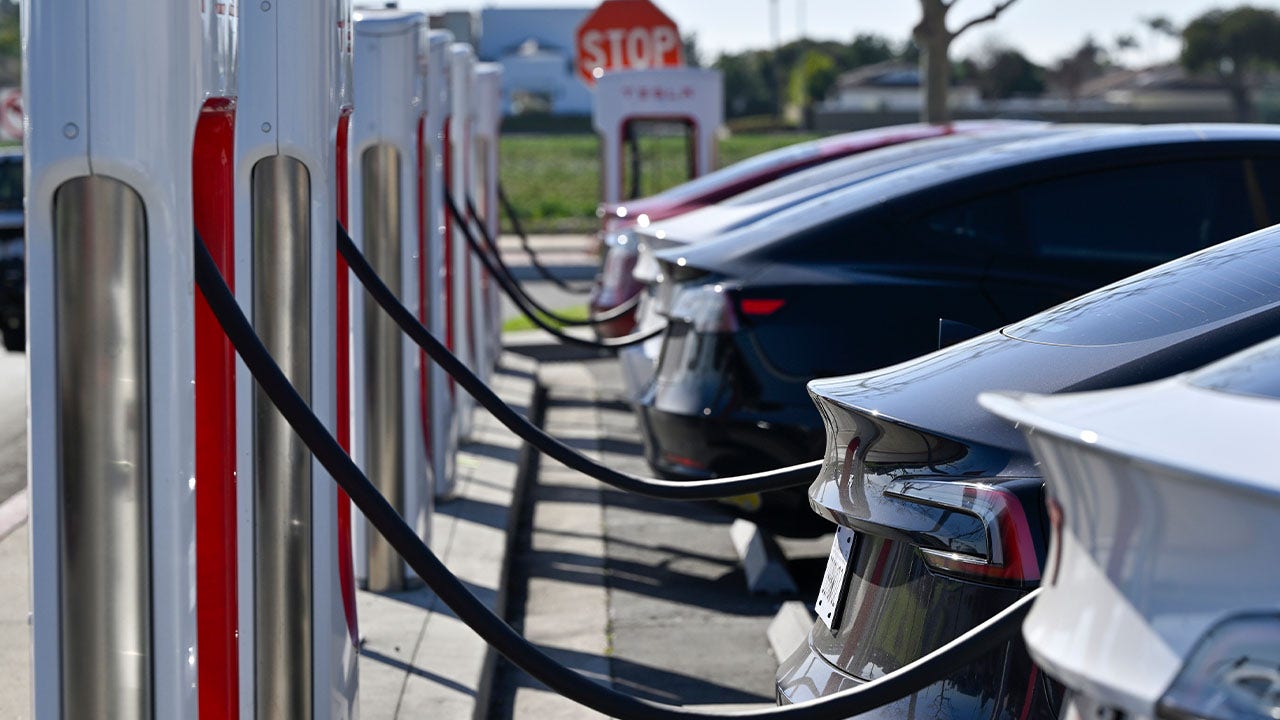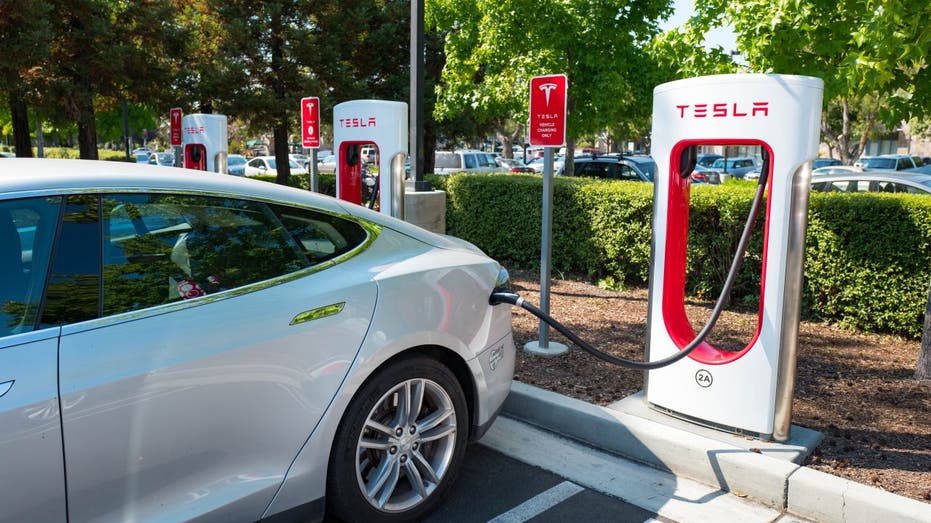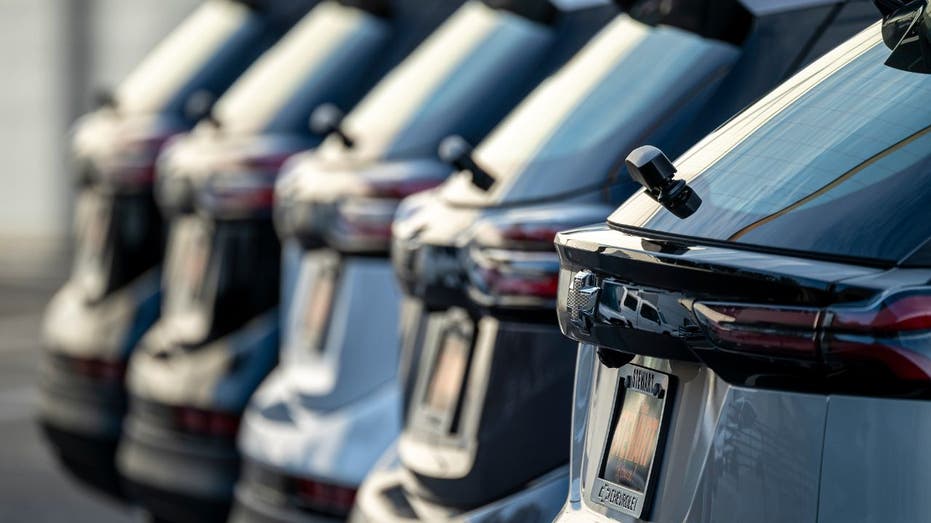Finance
Utilities experts speak on nation’s ability to accommodate wider EV adoption: ‘Doesn’t just happen magically’

Last month, the Biden administration finalized highly-anticipated environmental regulations that are ultimately intended to incentivize wider adoption of electric vehicles (EV).
The aggressive emissions standards for gas-powered vehicles are meant to compel automakers to increase production and sales of EVs, plug-in hybrids, traditional hybrids and fuel cell vehicles.
Under one “low cost” model outlined by the Environmental Protection Agency (EPA), officials said automakers would be forced to ensure 56% of light-duty car sales are battery electric and another 13% are hybrid by 2032.
Those goals have raised the prospect of whether the U.S.’s grid system is ready to accommodate wider adoption of EVs.
BUYERS OF TESLA’S CHINESE RIVAL EV MAY FACE MONTHSLONG WAIT FOR SU7
Tesla CEO Elon Musk once ominously warned that EV’s would roughly double the world’s need for electricity. And Toyota’s Chief Scientist, Gill Pratt, has issued a similarly dire forecast, opining that the world simply isn’t ready for EVs.

So where exactly do utilities stand in the matter? Grid operations experts who spoke to FOX Business were broadly optimistic about the nation’s prospects for accommodating wider EV adoption – but with a few caveats.
Each agreed that decades of relatively flat demand were over and that converging factors – EVs being just one of them – have necessitated the need to modernize and build out capacity.
CLEAN TEACH, AI BOOM STRAINING US ENERGY SUPPLY
“We can build up the grid. That’s a choice,” said Rob Gramlich, founder and President of Grid Strategies. “We just need to do it. You know, the early 2030s is plenty of time to invest in transmission and get the grid where it needs to be, so we can do it, but it doesn’t just happen magically. We just have to, as a country, build up our electricity networks.”
Gramlich believes policymakers and grid operators alike had a collective “oh crap” moment in 2023, when they realized “we got behind,” but are starting to get the message.
He was not worried the politics would prove to be a hurdle, as states, red and blue alike, start to realize the opportunity for jobs and investment.
“They all want those big chip plants and data centers. That’s a lot of economic development, property tax-based jobs,” Gramlich said. “So, I think if you asked any governor, ‘are you working on that?’ and they’re hearing concerns about their grids, they would all say, ‘yes.’”

Eric Cutter of Energy and Environmental Economics (E3) said doubling or tripling of peak load growth will require “a lot more investment in the distribution system.”
“It’s not an immediate challenge, but the pace of installing new transformers and new substations needs to accelerate to meet the goals that the Biden administration’s put out,” Cutter said.
Grid Forward Executive Director and CEO Bryce Yonker acknowledged that the next decade will be a significant transition after decades of relatively stagnation.
“You start stacking up electrified transportation with electrified industry with deeper, higher-density data centers with AI and that trend toward demand, that curve really seems like it’s now starting to bend upwards,” Yonker said. “So is the grid ready to accommodate it from a supply standpoint? The short answer would be no. We need to build some more infrastructure to help meet that demand.”
EVS MAY MAKE AIR DIRTIER THAN GAS-POWERED CARS AS CALIFORNIA PUSHES NEW MANDATES: STUDY
Each expert believed that more communication was desperately needed between grid operators, EV manufacturers, and policymakers who have tended to focus more on the latter. Cutter said that assertion got a “double thumbs up” from E3.
“We’ve been encouraging [automakers] for over seven years now, have said, ‘hey, you need to be talking to the utilities,” Cutter said. “It’s fine to sell the cars, but if you can’t charge them, there’s going to be a big bottleneck soon.”

While projections are far from definitive and vary by circumstances, attempts have been made to forecast the anticipated costs of building and modernizing the grid based on projected EV demand over the coming decade.
A report from the National Renewable Energy (NREL), the 2030 Charging Network, estimated that between $31 and $55 billion cumulative capital investment is needed to accommodate 33 million plug-in EV’s on the road by the end of the decade.
CLICK HERE TO GET FOX BUSINESS ON THE GO
These projections, however, only account for charging equipment and installation costs. Excluded from the report is the cost of updates, permitting, and operating and maintenance costs, among other externalities.
FOX Business’ Thomas Catenacci contributed to this report.
Read the full article here


















